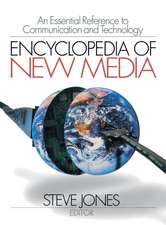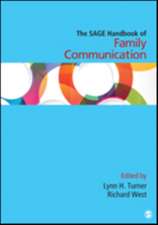Bridging Japanese/North American Differences: Communicating Effectively in Multicultural Contexts, cartea 1
Autor William B. Gudykunst, Tsukasa Nishidaen Limba Engleză Paperback – 9 mai 1994
Preț: 605.36 lei
Preț vechi: 712.18 lei
-15% Nou
Puncte Express: 908
Preț estimativ în valută:
115.83€ • 120.95$ • 95.65£
115.83€ • 120.95$ • 95.65£
Carte tipărită la comandă
Livrare economică 15-29 aprilie
Preluare comenzi: 021 569.72.76
Specificații
ISBN-13: 9780803948358
ISBN-10: 0803948352
Pagini: 153
Dimensiuni: 152 x 229 x 11 mm
Greutate: 0.23 kg
Ediția:1
Editura: SAGE Publications
Colecția Sage Publications, Inc
Seria Communicating Effectively in Multicultural Contexts
Locul publicării:Thousand Oaks, United States
ISBN-10: 0803948352
Pagini: 153
Dimensiuni: 152 x 229 x 11 mm
Greutate: 0.23 kg
Ediția:1
Editura: SAGE Publications
Colecția Sage Publications, Inc
Seria Communicating Effectively in Multicultural Contexts
Locul publicării:Thousand Oaks, United States
Cuprins
Introduction
Cultural Similarities and Differences Between the United States and Japan
Language Usage in the United States and Japan
Communication Patterns in the United States and Japan
Expectations for Japanese-North American Communication
Effective Japanese-North American Communication
Cultural Similarities and Differences Between the United States and Japan
Language Usage in the United States and Japan
Communication Patterns in the United States and Japan
Expectations for Japanese-North American Communication
Effective Japanese-North American Communication
Notă biografică
Descriere
In this volume, Gudykunst applies his world-renowned approach to intercultural communication to the specifics of Japanese//North American communication. After laying out the basic theories of intercultural communication, the authors explain the similarities and differences in patterns of communication in Japan and the United States. They then demonstrate how an understanding of these contrasting patterns can help Japanese and North Americans communicate more effectively. By examining issues such as attitudes and stereotypes, ways to deepen the understanding of Japanese behaviour are suggested. Also discussed are the factors that influence motivation, knowledge and skills to increase communication effectiveness.

















